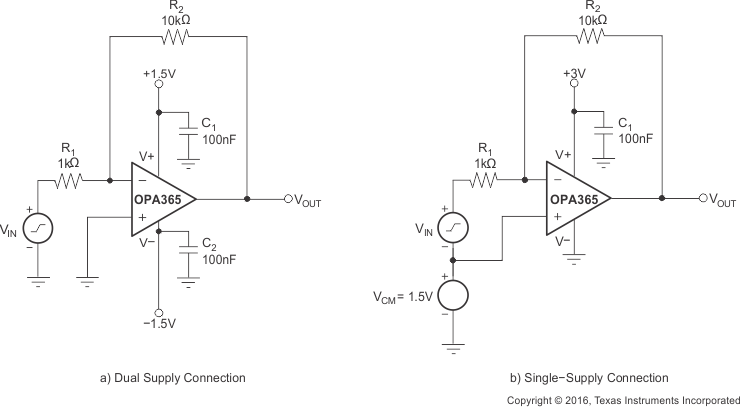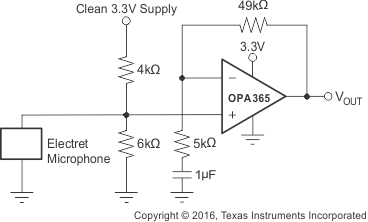SBOS365G may 2006 – may 2023 OPA2365 , OPA365
PRODUCTION DATA
- 1
- 1 Features
- 2 Applications
- 3 Description
- 4 Revision History
- 5 Device Comparison Table
- 6 Pin Configuration and Functions
- 7 Specifications
- 8 Detailed Description
- 9 Application and Implementation
- 10Device and Documentation Support
- 11Mechanical, Packaging, and Orderable Information
Package Options
Mechanical Data (Package|Pins)
- D|8
Thermal pad, mechanical data (Package|Pins)
Orderable Information
9.1.1 Basic Amplifier Configurations
As with other single-supply op amps, the OPAx365 can be operated with either a single supply or dual supplies. Figure 9-1 shows a typical dual-supply connection, which is accompanied by a single-supply connection. The OPAx365 are configured as a basic inverting amplifier with a gain of −10 V/V. The dual-supply connection has an output voltage centered on zero, while the single-supply connection has an output centered on the common-mode voltage VCM. For the circuit shown, this voltage is 1.5 V, but can be any value within the common-mode input voltage range. The OPAx365 VCM range extends 100 mV beyond the power-supply rails.
 Figure 9-1 Basic Circuit Connections
Figure 9-1 Basic Circuit ConnectionsFigure 9-2 shows a single-supply, electret microphone application where VCM is provided by a resistive divider. The divider also provides the bias voltage for the electret element.
 Figure 9-2 Microphone Preamplifier
Figure 9-2 Microphone Preamplifier